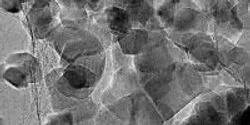nanotechnology

With a "breaker space," ultra-low vibration chambers and tissue culture rooms, a new world-class research complex at Michigan Engineering will let researchers study the forces at work at the smallest scales to advance nanotechnologies in energy, manufacturing, healthcare and biotechnology.

Biomedical engineering researchers have developed a drug delivery system consisting of nanoscale “cocoons” made of DNA that target cancer cells and trick the cells into absorbing the cocoon before unleashing anticancer drugs. The work was done by researchers at North Carolina State University and the University of North Carolina at Chapel Hill.

Researchers at the US Department of Energy’s (DOE) Argonne National Laboratory have created a small scale “hydrogen generator” that uses light and a two-dimensional graphene platform to boost production of the hard-to-make element.

A microbe developed to clean up nuclear waste and patented by a Michigan State University researcher has just been improved.

Researchers from North Carolina State University, Duke University and the University of Copenhagen have created the world’s largest DNA origami, which are nanoscale constructions with applications ranging from biomedical research to nanoelectronics.

A research group led by Professor Hiroyuki Noji, Department of Applied Chemistry, Graduate School of Engineering, University of Tokyo, successfully observed and touched the rotational motion of a 1-nm synthetic molecular machine through the application of a single-molecule capturing and manipulation technique using optical microscopy and a bead probe (single-molecule motion capturing), which allows visualization of molecular mechanical motion.












